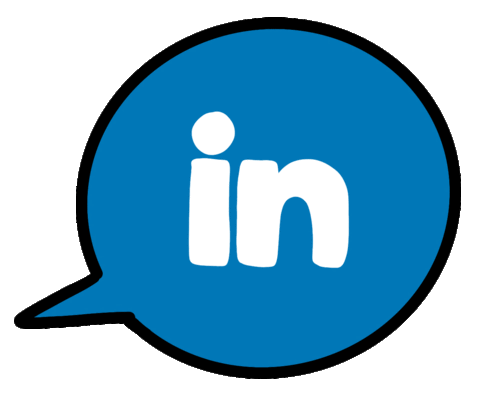“LinkedIn Let SlideShare Go, But Scribd Has a Big Plan”
- Harmeet Singh Devgun
- 2 days ago
- 3 min read
Updated: 2 hours ago
Setting the Stage
Before today’s fast-paced world of TikTok videos and YouTube shorts, there was SlideShare, a platform that quietly transformed how professionals shared knowledge both visually and socially. Founded in 2006 by Rashmi Sinha, Jonathan Boutelle, and Amit Ranjan, SlideShare solved a surprisingly frustrating problem: presentations were often trapped on personal laptops or buried in email chains. The founders envisioned a space where ideas, not just documents, could travel freely across the web (LinkedIn News, 2012).
Within months, SlideShare became the go-to platform for professionals, educators, and creators to share their work publicly. Its timing was perfect. The mid-2000s saw a surge in digital content platforms: YouTube for video, Flickr for photos, and WordPress for blogging. SlideShare filled a missing gap: visual storytelling for professionals. By allowing users to upload PowerPoints, PDFs, and infographics, it democratized access to knowledge and made expertise shareable, discoverable, and often viral (TechCrunch, 2020).
Rise and Growth Under LinkedIn
In 2012, LinkedIn recognized SlideShare’s growing influence and acquired the platform for $119 million. The goal was clear to enhance professional engagement and make LinkedIn more than just a space for resumes and job postings (LinkedIn News, 2012).

With SlideShare integrated into LinkedIn profiles, professionals could showcase their expertise through visual content presentations, infographics, and reports that reflected their work and ideas. This move strengthened LinkedIn’s ecosystem by encouraging content sharing and personal branding within professional networks (CMSWire, 2016).
For several years, SlideShare served as a leading platform for knowledge exchange and professional visibility. But the digital landscape was evolving fast. The rise of Canva, founded in 2012 by Melanie Perkins, Cliff Obrecht, and Cameron Adams, introduced a new wave of design accessibility. Perkins, who became one of the youngest female tech CEOs, built Canva to make professional-quality design simple for everyone advanced skills required (Business Insider, 2020; Forbes, 2021).
As Canva and other tools like Prezi and Google Slides gained popularity, users began shifting toward platforms offering more creativity, collaboration, and visual polish. SlideShare’s more static approach started to feel dated in comparison.
After Microsoft acquired LinkedIn in 2016, the company’s focus turned toward enterprise software and AI-driven productivity tools. SlideShare, once a pioneer in online presentation sharing, gradually lost visibility and innovation momentum. What had begun as a revolutionary idea now risked being overshadowed by newer, more dynamic tools shaped by changing user expectations and, in Canva’s case, by a new generation of female leadership driving innovation in tech (Forbes, 2021).
Scribd’s Takeover and the Promise of Revival

In 2020, Scribd, a digital library and e-book subscription service, acquired SlideShare from LinkedIn. The move seemed strategic; both platforms shared a mission to make information accessible and shareable. Scribd promised to preserve SlideShare’s archives while introducing new ways to discover and share presentations (TechCrunch, 2020).
While SlideShare’s core community had shrunk, the acquisition sparked hope for a revival. Scribd envisioned integrating SlideShare into its ecosystem of readers, writers, and researchers. If executed well, this partnership could restore SlideShare’s original spirit as an open, idea-driven hub for learning and professional storytelling.
Lessons and Impact

SlideShare’s journey from startup to acquisition, decline, and revival offers a powerful lesson about innovation and timing. It shows how even great ideas can lose momentum without continued adaptation and how the right company can bring them back to life.
For students, entrepreneurs, and professionals, SlideShare’s story highlights the importance of flexibility and reinvention in a changing digital landscape. What began as a small platform for sharing slides has evolved into a modern learning tool within Scribd’s expanding universe.
Today, SlideShare continues to serve as a hidden gem, a reminder that with the right vision, even forgotten platforms can find new purpose and value.
References:
LinkedIn to acquire SlideShare. (2012, May 3). Linkedin.com; LinkedIn to acquire SlideShare. https://news.linkedin.com/2012/05/linkedin-to-acquire-slideshare
Ha, A. (2020, August 11). Scribd acquires SlideShare from LinkedIn. TechCrunch. https://techcrunch.com/2020/08/11/scribd-acquires-slideshare/
How SlideShare Can Help Power Your LinkedIn Marketing Campaigns. (n.d.). CMSWire.com. https://www.cmswire.com/content-marketing/how-slideshare-can-help-power-your-linkedin-marketing-campaigns/
Weinberger, M. (n.d.). This 29-year-old startup founder learned to kiteboard to impress investors — and it paid off big time. Business Insider. https://www.businessinsider.com/canva-ceo-melanie-perkins-interview-2016-8
Forbes. (2025). Melanie Perkins. Forbes. https://www.forbes.com/profile/melanie-perkins/


